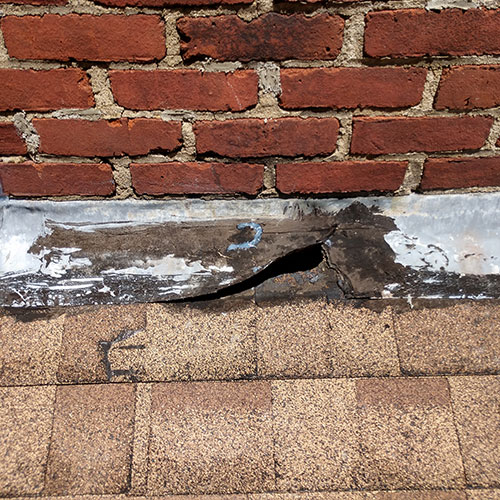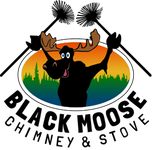Homeowners should always be aware of water and its affects on their home. Whether it’s how it enters your home or how to resolve the issue before a serious problem occurs, it’s important to keep up with these issues. One of the most common entry points for water is the chimney system—something often overlooked and misdiagnosed. If you have noticed water stains on your ceilings or wall, you might immediately blame upper-story plumbing or a roofing issue. However, you should actually call the chimney professional first, as it most likely is a chimney leak!
 Common Water Entry Points
Common Water Entry Points
When you suspect a chimney leak, the first thing the technician check is the flashing. It is the most common point of water penetration because it is often installed incorrectly or becomes dislodged due to time and weather. Your flashing should not have sealant or tar covering it, and it should not have nails or screws exposing.
If you find pieces of flashing in your yard or on your roof, your flashing is likely causing the leak. If it’s not the flashing, the chimney professional will then check the other common water entry points. When you trust our team at Black Moose Chimney & Stove, we will get to the bottom of your problems. Some of the other common entry points with your chimney are the following:
- Faulty or Missing Cap – If you have an older home, it may not have a chimney cap. Many homeowners who grew up in older generations didn’t see the need for a cap. Chimney science now emphasize that if your chimney isn’t properly capped with a properly-sized chimney cap, it will lead to damage, a drop in efficiency, and dangers. The cap is installed directly onto the flue. It prevents water, weather, and animals from entering.
- Cracked or Improperly-Constructed Crown – Masonry chimneys should have a masonry slab over the top of the chimney which acts as a ceiling – chimney crown. This crucial piece should be no less than four inches thick at its edge, and it should extend from the flue opening past the chimney edge at a slant. It should also have two inches of overhang to allow water to drip down. At Black Moose, we are experienced at constructing masonry crowns. A poorly-constructed crown can become damaged due to standing water and direct sunlight.
- Damaged Masonry – Masonry is porous by nature. While it easily allows gases and heat to pass out of the chimney, it can also allow water to enter. Over time, this can allow leaks into your system, which can wreak havoc to the chimney. If you find gaps and cracked masonry, it is time to call the chimney sweep!
You can count on Black Moose Chimney & Stove. Not only do we diagnose the leak and repair the damaged parts, but we also stop the leak at its source to prevent recurrence. If you reside in New Hampshire and suspect a chimney leak, call us today at 603-525-7905!


